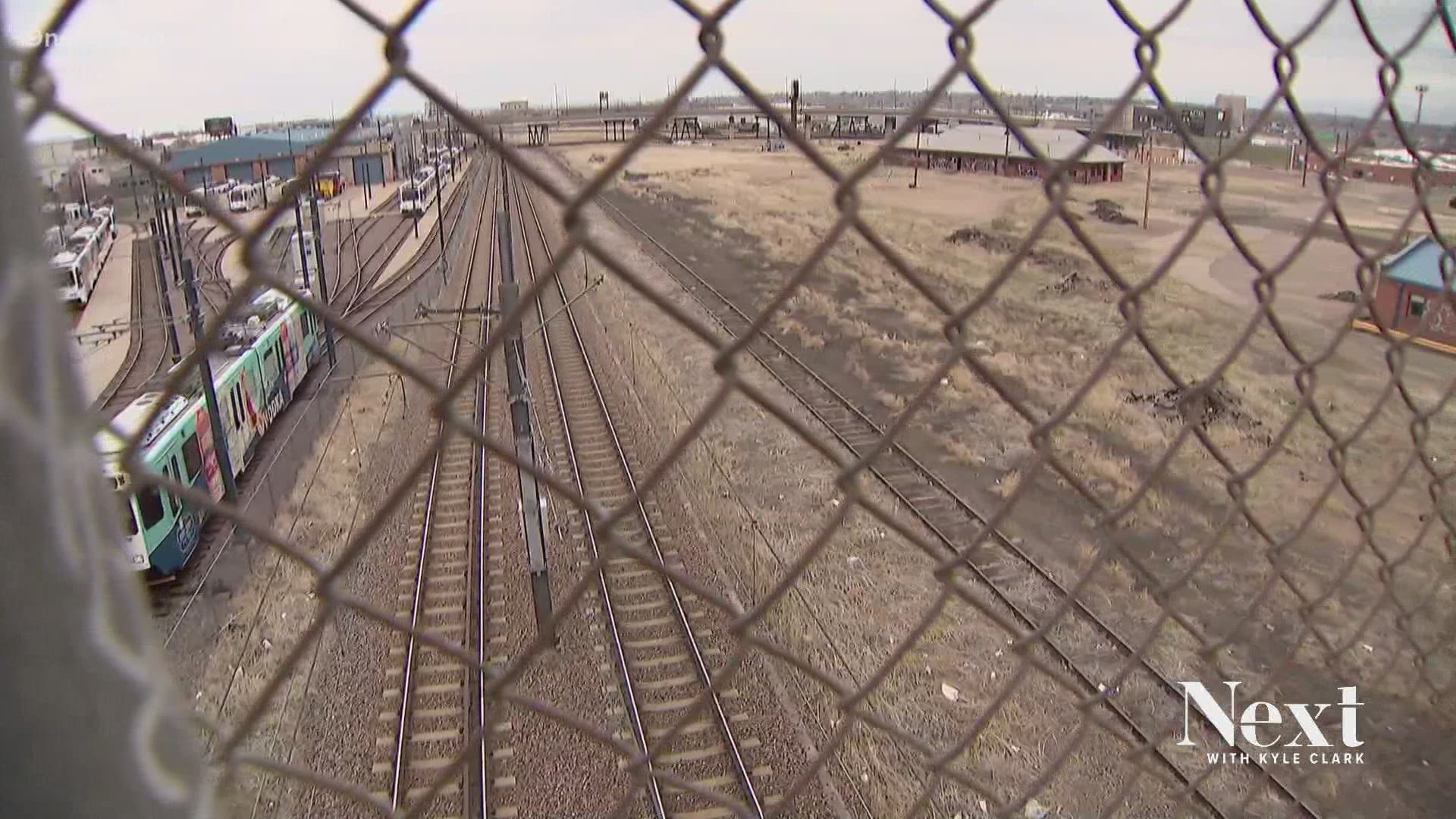DENVER — Interstate 25 in central Denver is between a rock and a hard place -- the "rock" being the South Platte River and the "hard place" being a railroad.
Drivers can count on traffic between Santa Fe Drive and Colfax Avenue, and the solutions are limited for the Colorado Department of Transportation (CDOT).
"Between the river and the railroad you're really constrained on what you can do with I-25," said CDOT's High Performance Transportation Enterprise (HPTE) Director Nick Farber.
Drivers know HPTE more for the tolls added to U.S. 36, I-25 and C-470. HPTE was created through FASTER, the vehicle registration fees signed into law in 2009. FASTER stands for "Funding Advancement for Surface Transportation and Economic Recovery Act."
"Surface transportation' infrastructure is defined as anything but airports. We can work on highway, rail, transit," said Farber.
And for the last two years, HPTE has eyed Burnham Yard for highway, rail and transit. Burnham Yard is an old rail yard east of I-25, from around Third Avenue to 13th Avenue.
The purchase was delayed because of COVID which, actually, allowed CDOT to try to apply for a federal grant. It did not get that grant money, but it has found another way to fund the $50 million price tag.
"My focus is economic development, and transportation is certainly critical to economic development," said Jeff Kraft, Director of Business Funding and Incentives for the Colorado Office of Economic Development and International Trade.
The state's economic development office will fund $7.5 million of the $50 million. CDOT is covering another $7.5 million. The rest will be borrowed by HPTE.
It is an odd marriage.
CDOT, through HPTE, wants to buy 61 acres of land that is not strictly for transportation, and the state's economic development office is helping buy land that is not strictly for development.
"When you invest in infrastructure, it attracts employers and workers and facilitates economic growth," said Kraft.
Of the 61 acres, CDOT expects it will need about a quarter of that. The goal would be to move the railroad that borders I-25 on the east, so that I-25 could be expanded away from the Platte River. The purchase of Burnham Yard would, more importantly, give CDOT the area needed for a Front Range Passenger Railroad, and it would help the Regional Transportation District (RTD) to expand light rail on multiple tracks.
"It's one of the many reasons why we're doing this. It's not just to alleviate traffic on I-25, it's to create a whole host of options for commuters, along the Front Range, Colorado Springs, Fort Collins," said Farber.
The Front Range Passenger Railroad is a proposed train that would connect Pueblo to Fort Collins. On Tuesday, the state legislature took the first step to approve a Front Range Passenger Rail district. The district would include counties throughout the rail line. Similar to RTD or the Metropolitan Stadium District (the metro area counties that funded Coors Field and Mile High Stadium), residents in the counties that make up the Front Range Passenger Rail District would be asked to approve a sales tax to fund the rail line. That includes Boulder County, which approved a sales tax in 2004 for the yet-to-be-built Northwest Rail Line.
RTD could benefit from the Burnham Yard plan because it could add light rail lines to run additional trains. Yet, RTD is not footing any of the upfront money.
"We definitely want to help RTD out in this situation. It's their big operational bottleneck for light rail," said Farber. "That's a conversation we're going to have to have with RTD in the future about how they contribute to the project, and perhaps, how we get compensated for that in a future time."
While the state's economic development office is providing 25% of the funds, it is likely to have a hand in 75% of the property.
"That gives us another 40-plus acres to do other things to enhance our economic development and competitiveness," said Kraft. "Really, the majority of the land will be used for non-transportation purposes."
That is where the state's economic development office would get a return on its investment; while transportation would grow horizontal, the economic development would grow vertical.
"Longer term, if some of the state money stays in the deal, this is going to be incredibly valuable land that will be sold off to private developers," said Kraft "So, that's another potential source of paying back the funds to state taxpayers."
He mentioned rail yard redevelopment projects in Milan, Italy, New York, Chicago, Sacramento, and Santa Fe as examples of revitalizing areas that had not been providing any public use.
SUGGESTED VIDEOS: Full Episodes of Next with Kyle Clark

